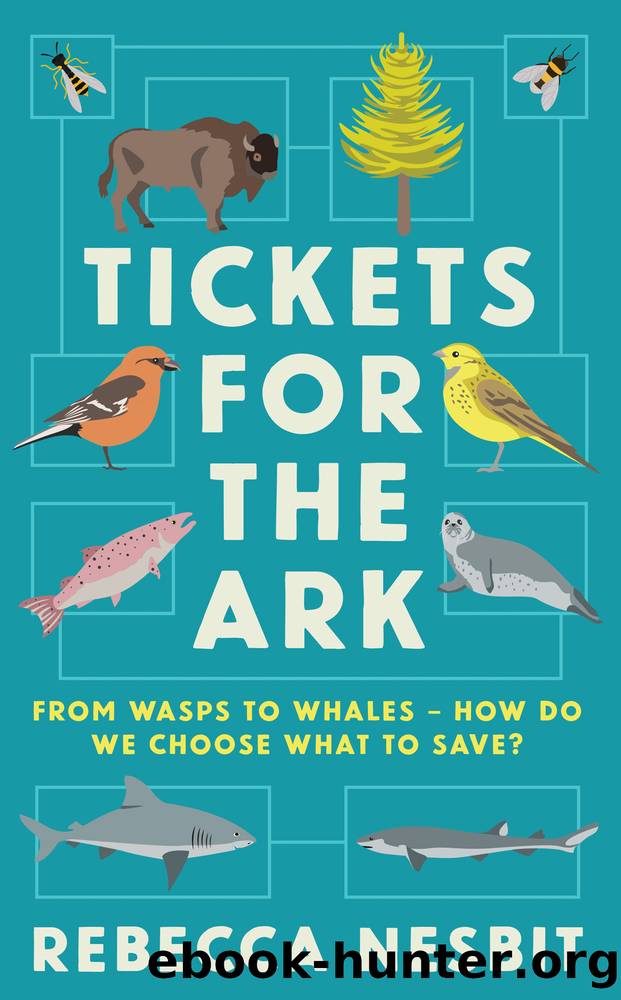Tickets for the Ark: From wasps to whales â how do we choose what to save? by Rebecca Nesbit

Author:Rebecca Nesbit [Nesbit, Rebecca]
Language: eng
Format: epub
Tags: Non-Fiction, Science, Conservation, Environment, Nature
ISBN: 9781782838067
Publisher: Profile
Published: 2022-02-17T00:00:00+00:00
At the other end of the spectrum, animal populations that are very high or rising rapidly raise dilemmas related to welfare. The issues become particularly thorny when the animals concerned are killed, and disagreements can come from both the manner of killing and its motivation. The debates are made more complex by the fact that a single animal may be killed for multiple reasons â a sport hunter can kill a âpestâ animal, then sell the meat, for example. Each animalâs death can therefore be embroiled in multiple debates. Is pleasure a legitimate excuse for killing? What counts as a pest? Does wild meat have a higher welfare standard than meat from livestock? Is it more sustainable?
All these issues can become entwined, and nowhere more so than in Australiaâs culling of kangaroos. The killing of Australiaâs national animal emblem divides the nation. Vocal opponents denounce the culls as an inhumane massacre, while supporters see them as a traditional aspect of rural life. After all, Aboriginal Australians have been hunting kangaroos for thousands of years, often making full use of the carcass: meat is eaten, teeth are used as needles and sinews from the tail are used as thread. Hunting, however, changed and intensified with the arrival of European settlers, who were quick to define kangaroos as pests that damaged gardens and competed with livestock for grazing. Between 1877 and 1907, around 8 million kangaroos and wallabies were presented to the Queensland Government alone for bounty money, pushing some species to the brink of extinction. Times have changed since then and kangaroos can now only be shot under license, ensuring that the harvest is sustainable.
Kangaroos are killed in different situations, ranging from farmers shooting âpestâ kangaroos on their land to professional marksmen taking part in commercial hunts for meat and leather. The line is blurred, though: some farmers allow licensed shooters on their land and view the commercial kangaroo industry as self-funding pest control. The definition of âpestâ is decidedly subjective in both farming and conservation, and opinion is divided on whether kangaroo culls benefit or harm the wider environment. One controversy is that farmers control dingoes to protect livestock, and this can allow kangaroo populations to grow. In high densities, kangaroos can reduce the diversity of plants, affecting habitat quality as well as the populations of other animals. Theyâre also a problem for people, competing with livestock for food, damaging fences and causing car accidents.
However, at lower population densities, kangaroos play an important role as ecosystem engineers. Some conservationists argue that a commercial kangaroo industry could be the motivation we need to manage land to suit the kangaroo. Australia has been degraded by livestock ever since Europeans arrived, and replacing livestock with sustainable harvest of wild kangaroo meat could be a way to restore the rangelands. However, more evidence is needed to answer the question of whether this is a viable solution for habitat protection. In fact, weâre short on data about the ecological impact of kangaroo culls in general, and thatâs before weâve thrown welfare debates into the mix.
Download
This site does not store any files on its server. We only index and link to content provided by other sites. Please contact the content providers to delete copyright contents if any and email us, we'll remove relevant links or contents immediately.
The Lonely City by Olivia Laing(4751)
Animal Frequency by Melissa Alvarez(4395)
All Creatures Great and Small by James Herriot(4233)
Walking by Henry David Thoreau(3895)
Exit West by Mohsin Hamid(3778)
Origin Story: A Big History of Everything by David Christian(3650)
COSMOS by Carl Sagan(3558)
How to Read Water: Clues and Patterns from Puddles to the Sea (Natural Navigation) by Tristan Gooley(3409)
Hedgerow by John Wright(3277)
The Inner Life of Animals by Peter Wohlleben(3261)
How to Read Nature by Tristan Gooley(3250)
How to Do Nothing by Jenny Odell(3235)
Project Animal Farm: An Accidental Journey into the Secret World of Farming and the Truth About Our Food by Sonia Faruqi(3178)
Origin Story by David Christian(3148)
Water by Ian Miller(3129)
A Forest Journey by John Perlin(3027)
The Plant Messiah by Carlos Magdalena(2883)
A Wilder Time by William E. Glassley(2818)
Forests: A Very Short Introduction by Jaboury Ghazoul(2790)
